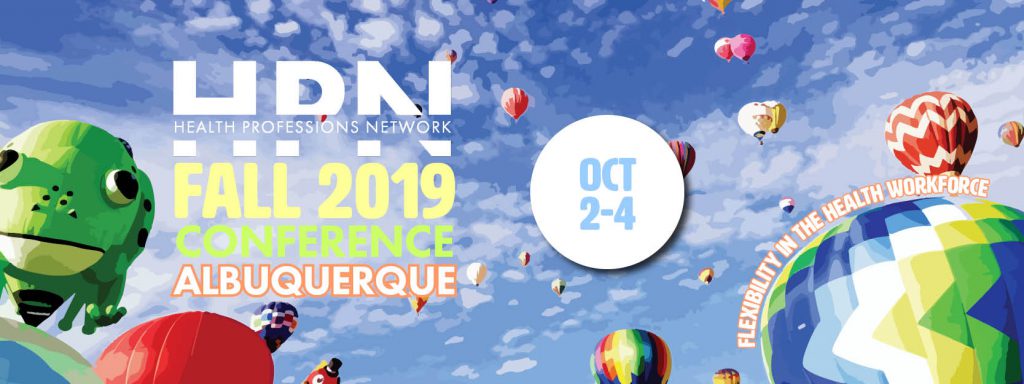Stackable credentials in health care could help providers address industry skills gaps and staffing shortages, as well as promote opportunity for individuals. Initiatives aimed at addressing relevant issues in the credentialing marketplace are picking up steam.
In our last Health Professions Network blog, we looked at how to define workforce flexibility in health care in an effort to address the widening skills gap in the industry. Stackable credentials are gaining more interest from stakeholders as a systematic way to promote this flexibility.
"A credential is considered stackable when it is part of a sequence of credentials that can be accumulated over time to build up an individual’s qualifications and help them to move along a career pathway or up a career ladder to different and potentially higher-paying jobs," reads a 2010 resource from the U.S. Department of Labor. Stackable credentials in health care could promote accessibility of career pathways for individuals at all levels and provide lateral or latticed connections between pathways.
However, beyond even the obvious complexity of negotiating acceptance for stackable credentials in health care, issues have been identified with credentials in general which a stackable credential system must overcome. So—what's going on in health care credentialing, and where are we?
Potential Problems with Stackable Credentials in Health Care
Stackable credentials are an attractive and intuitive way to promote workforce flexibility in health care, but some experts have raised concerns that a stackable credentialing system could potentially double-down on issues that dog credentials, in general—namely, that some just aren't valuable.
"Stackable pathways could shunt students, particularly those from underserved populations, away from degrees and toward short-term credentials of questionable value," writes Paul Fain of Inside Higher Ed. "[New] findings raise questions about the labor-market value of brief academic programs."
Fain summarizes a 2016 study published in the Journal of Vocational Education & Training which examined eleven health care credential pathways established by the Health Professions Pathways (H2P) consortium, a group very familiar to HPN members, and found positive and negative results.
"On the positive side, researchers found that many of the students who completed a short-term program went on to earn more involved credentials or were still enrolled," writes Fain. "And even students who earned minimalist certificates -- 12 credits or fewer -- were more likely to get a job."
But the very short-term stackable credentials in health care had very little impact on wages, argue the study authors. "Certificates of 12 credits or fewer did not lead to a raise, the study found," writes Fain. "In some cases, such as short-term certificates for certified nursing assistants or community health workers, certificate holders earned less than their peers without a credential."
The findings are of particular concern due to the popularity of the shortest-term certificates—they accounted for more than 40 percent of all credentials awarded by the participating community colleges—as well as inequalities in achievement. Only 17 percent of black students and 16 percent of latino students earned a longer-term certificate or degree, compared to 28 percent of white students and 26 percent of Asian students.
“It is important to continue to monitor whether the short-term programs improve equitable outcomes by giving underrepresented students a novel pathway into longer programs,” write the study authors, “or whether these programs instead have a diversionary effect on historically underrepresented groups such as students of color and low-income students, given longstanding criticisms of the diversionary effects of sub-baccalaureate education on marginalized populations.”
Potential diversionary effects of short-term, introductory credentials in a stackable credential system need to be studied further. However, recent research using data from the Wisconsin Technical College System suggested that "students enrolled in stackable credentials were neither more likely nor less likely to complete an associate degree."

Lack of Transparency Dogs Credential Marketplace
Ultimately, the potentially diversionary effects of short-term credentials are closely related to or compounded by a widespread lack of transparency in a crowded credential marketplace.
Mary Beth Lakin, director of the Center for Education Attainment and Innovation at the American Council on Education, and Tara Underwood, dean of the School of Health Sciences at Middle Georgia State University, summarized the issue in a 2017 piece for the Council of State Governments. "There are now over 26,000 educational programs in the United States that offer certificates," write Lakin and Underwood. "With a myriad of programs, there is little transparency for participants regarding credential connectedness or value."
The authors cite a 2015 report from the Lumina Foundation, "Connecting Credentials: Making the Case for Reforming the U.S. Credentialing System," which argues that there's very little quality assurance in the credential marketplace. "There are more than 4,000 certification bodies in the U.S., and less than 10 percent are accredited or reviewed by a third party," reads the report. "As a result, quality among the many certification bodies -- and therefore quality of the certifications themselves -- varies enormously."
"No clear language exists for explaining what credentials mean in terms of knowledge and skills," reads the report. "This makes it difficult for students to understand whether they have what it takes to get a job in today’s economy. This lack of clarity makes it equally challenging for employers to know who is equipped for positions they seek to fill."
Scott Cheney, director of Credential Engine, a non-profit supported by the Lumina Foundation whose mission is to create credential transparency, describes the credentialing ecosystem as a "Wild West" in a recent interview with The EvoLLLution. "The most significant challenge facing the current credential landscape is the lack of transparency," said Cheney. "There is no consistent, comparable information about credentials, which results in a confusing and highly inefficient marketplace."
"Without [a common taxonomy], every credential is described in its own esoteric language, with no way to compare it to other credentials," said Cheney. Fundamentally, these issues need to be overcome for stackable credentials in health care to succeed.

What's Being Done in the Credentialing Marketplace?
From 2016-2018, the Lumina Foundation joined with the Corporation for a Skilled Workforce to create the "Connecting Credentials" effort, which concluded its mission after creating a framework and extensive action plan to revolutionize credentialing systems:
- Develop scalable ways to engage employers in the credentialing marketplace
- Empower learners to navigate the credentialing ecosystem
- Develop common language centered on competencies
- Create an interoperable data and technology infrastructure
- Foster shared understanding of credential quality and reciprocity among quality assurance processes
- Pursue public policy that advances equity in the credentialing ecosystem
- Promote field-based development of new credentialing tools, policies, and practices
Have we made much progress on these parameters since the conclusion of the Connecting Credentials effort? It's unclear—but momentum seems to leading to more productive partnerships.
Stackable credentials received a positive feature in the New York Times in February, and news continues to drip about new partnerships promoting new stackable credentials, like this tech industry news in Forbes in April, or this sponsored piece about cybersecurity pathways in New York published in the Harvard Business Review in June.
But are regional public-private partnerships, or partnerships between community colleges and specific employers, enough to make a dent in a national skills gap? At least, efforts to promote and facilitate broader systemic change are continuing.
In an effort to shed light on credential attainment and data collection across U.S. states, ExcelinEd and Burning Glass Technologies released a "Credentials Matter" report in May entitled, "A National Landscape of High School Student Credential Attainment Compared to Workforce Demand." The on-going research project seeks to provide actionable data analysis and resources for states and the public.
Cheney's Credential Engine, supported in part by the Lumina Foundation, is continuing to take steps to solve fundamental problems standing in the way of a better credential marketplace. "Credential Engine’s mission is to create the tools and infrastructures to map and collect credential information," said Cheney to The EvoLLLution. "Our Credential Transparency Description Language is like a dictionary that offers a common way for people and systems to describe and compare the characteristics of credentials."
"A growing number of states are partnering with Credential Engine to take important steps toward making essential data about credentials in their state open and transparent," said Cheney. In fact, on June 27, Credential Engine announced a new partnership with Washington's Workforce Training and Education Coordinating Board to do just that. "The number of states and regions formally engaging in this work will likely reach 20 by the end of 2019."
Join us Oct. 2-4 for More on Stackable Credentials in Health Care
In 2015, the Health Professions Network undertook an update to the U.S. Department of Labor fundamental competency pyramid for clinical health professions, an effort which required detailed crosswalking and collaborative work that provides a language foundation for fundamental, stackable credentials in health care. We wrote a white paper all about it.
That's why stackable credentials are a topic close to our chest, and why flexibility in the health care workforce is the guiding theme of our upcoming Fall 2019 conference in Albuquerque, New Mexico, October 2-4. Our sessions and discussions will all focus on this mounting trend: what's happening to promote workforce flexibility, developments in stackable credentials in health care, what the future will look like, and what roles non-physician professions might play.
This conference will organize a unique program of expert sessions all about how employers, stakeholders and new technologies are promoting the flexible movement of talent laterally and vertically throughout health care to fulfill staffing and community needs—initiatives like multi-skilling, micro-credentialing, and much more. We’ll also take a deeper look at what role professions, professional associations, educators and credentialing bodies might play in preparing and supporting professionals when flexible staffing is a greater priority of the health care industry.
Join us in Albuquerque to join the discussion and learn from other leading professions, educators and credentialing bodies making a difference in the future of health care.

